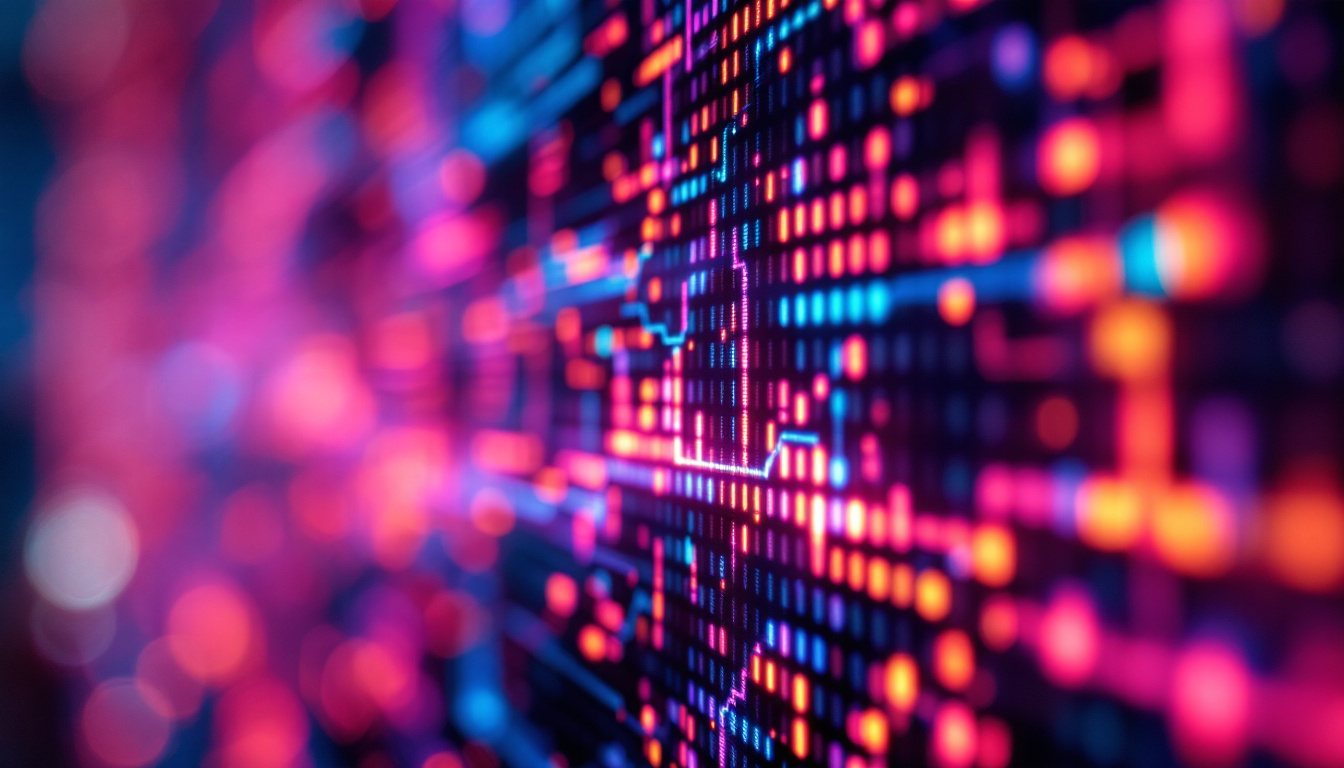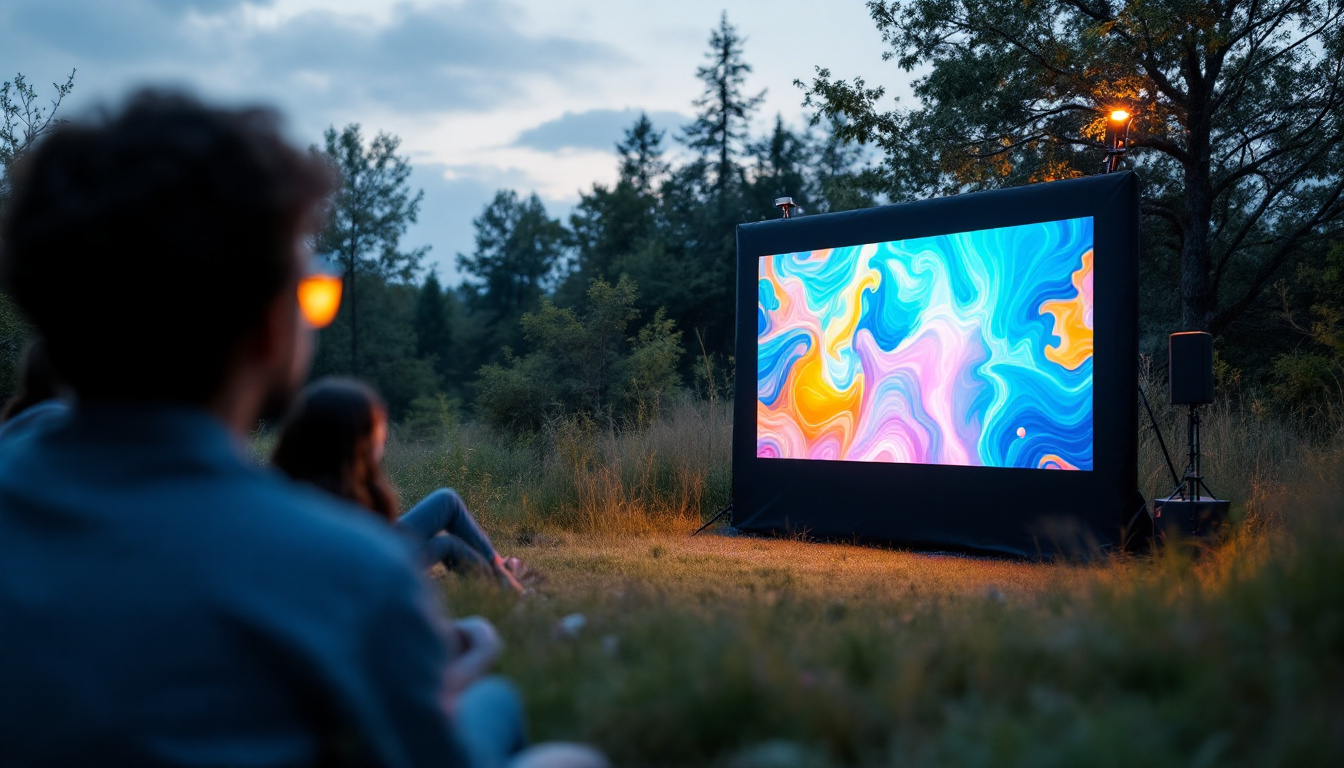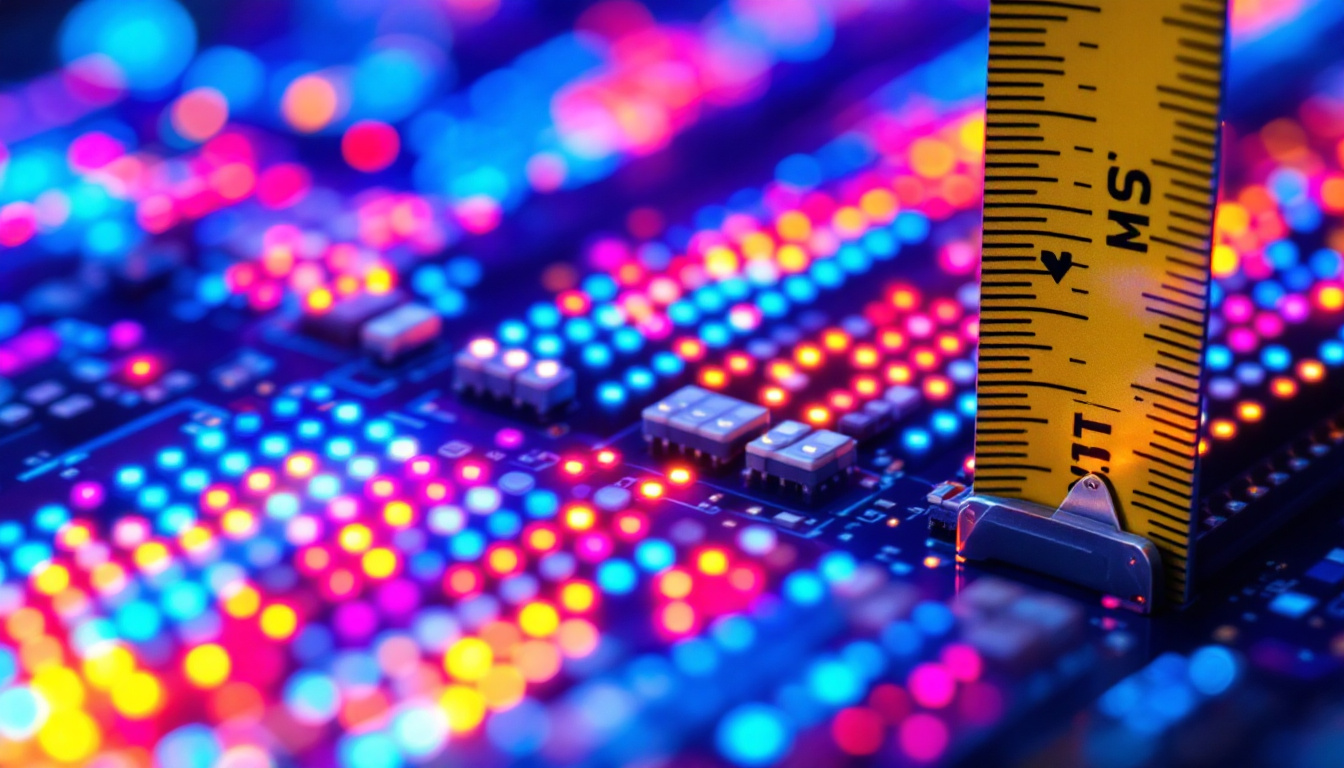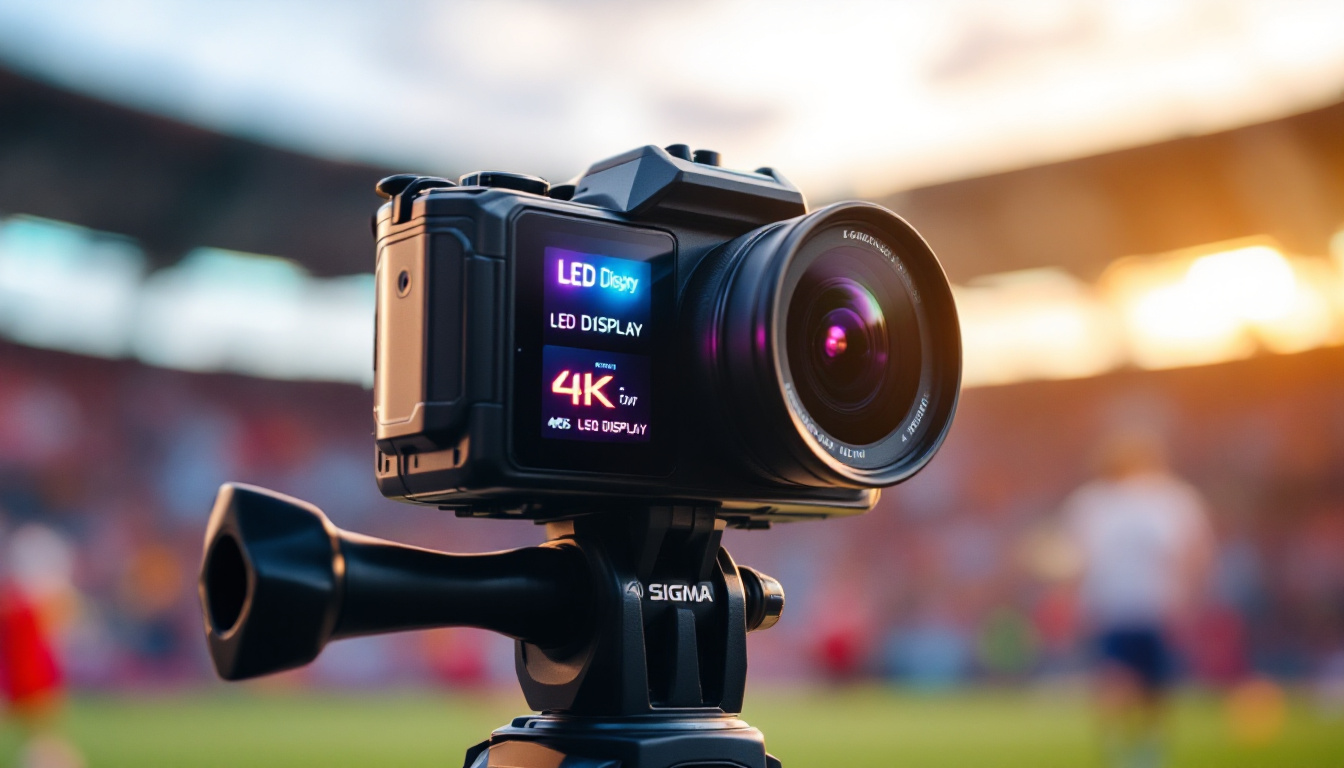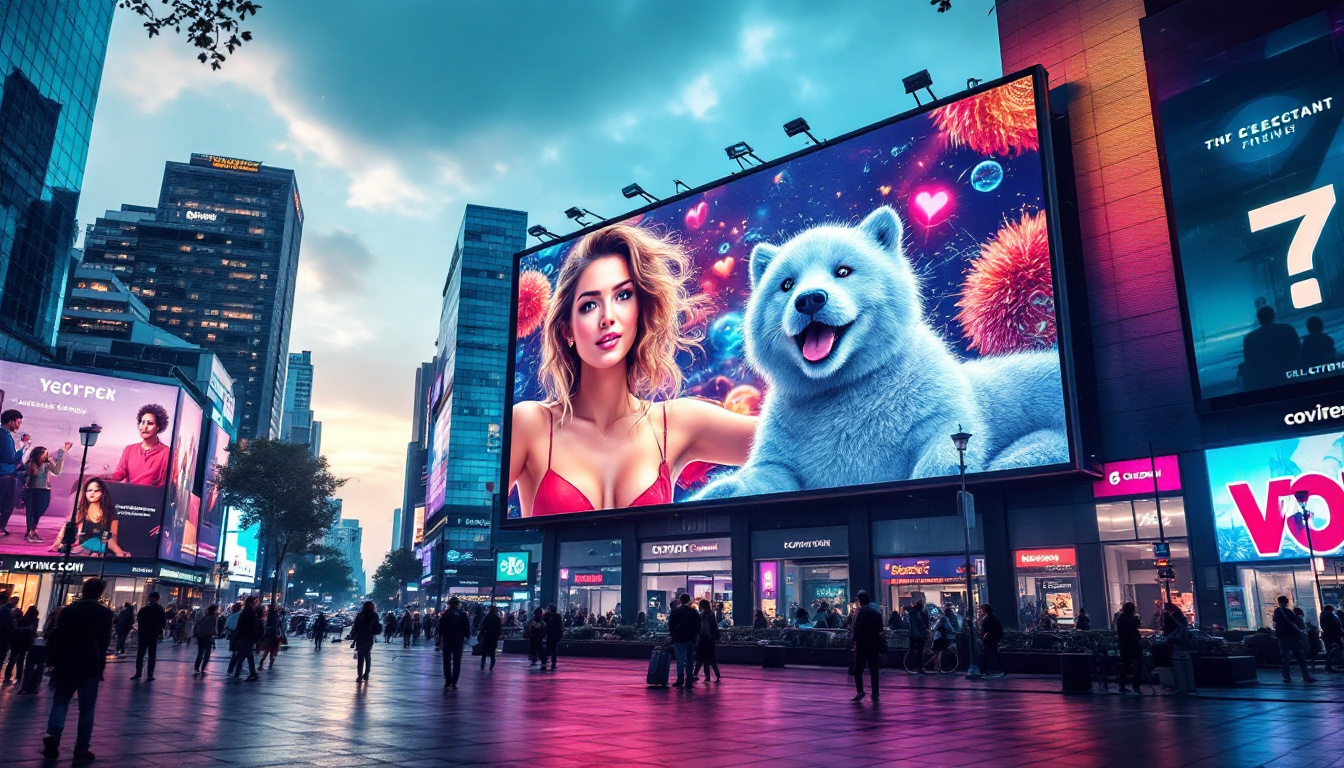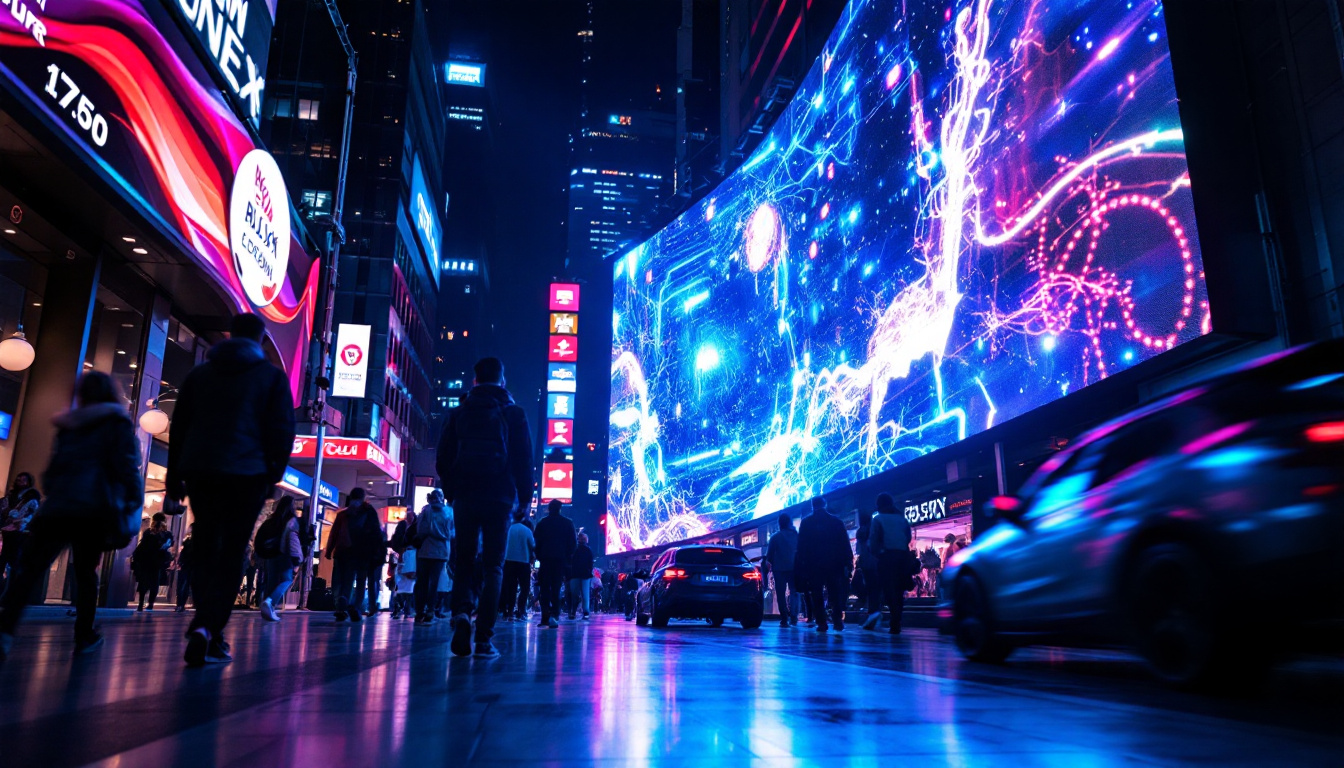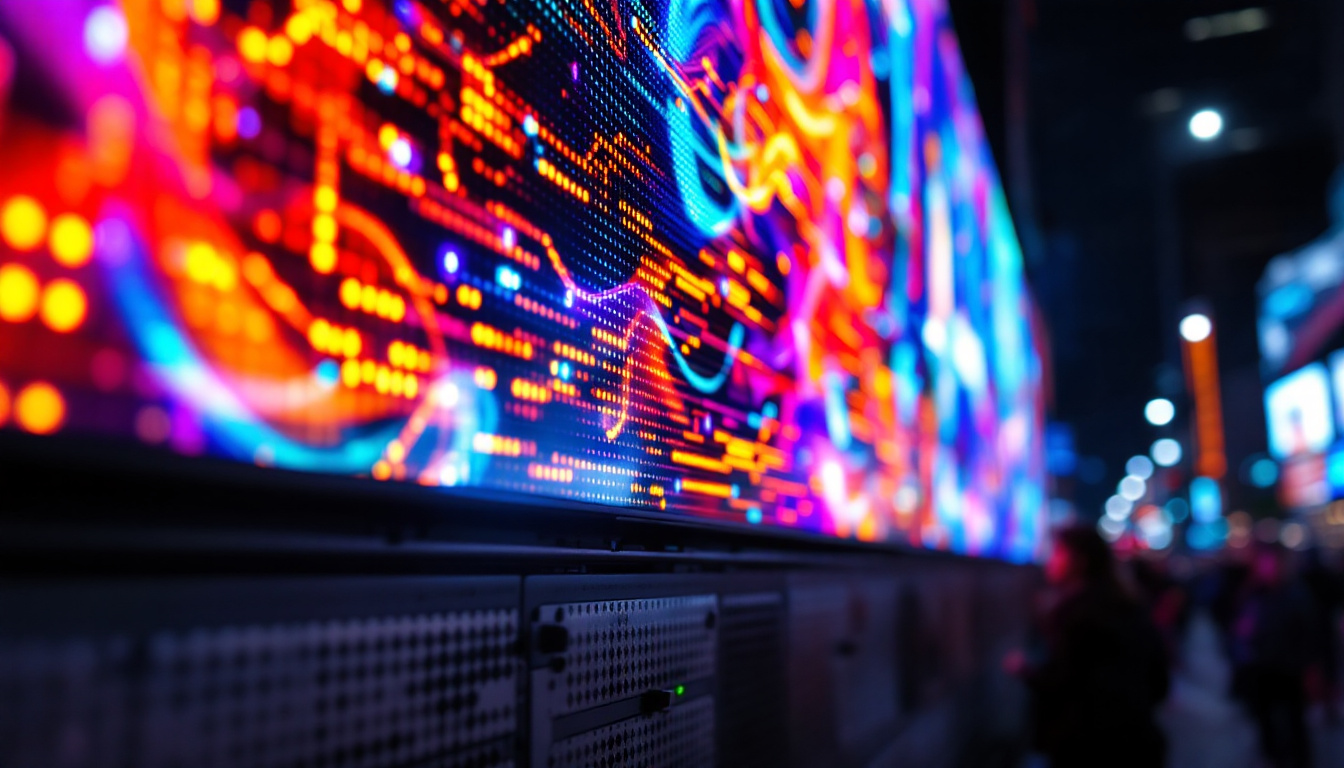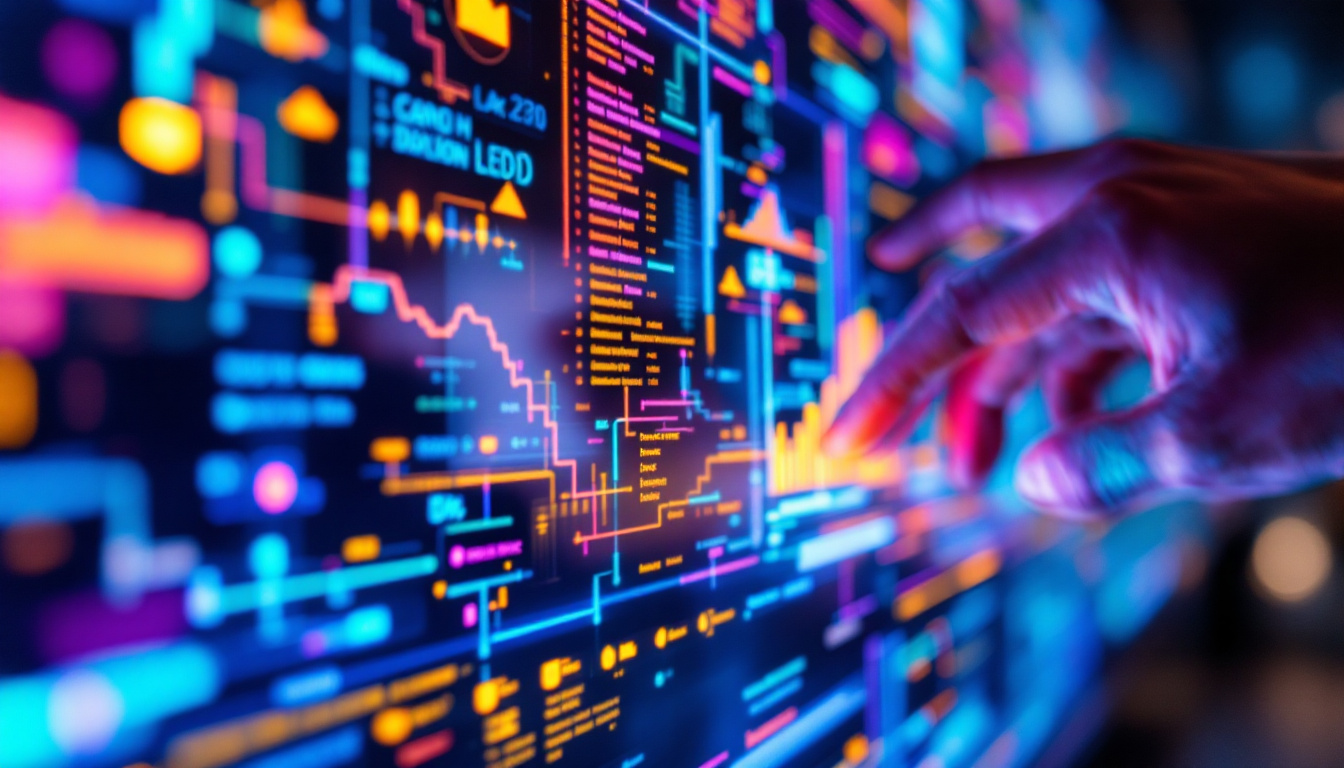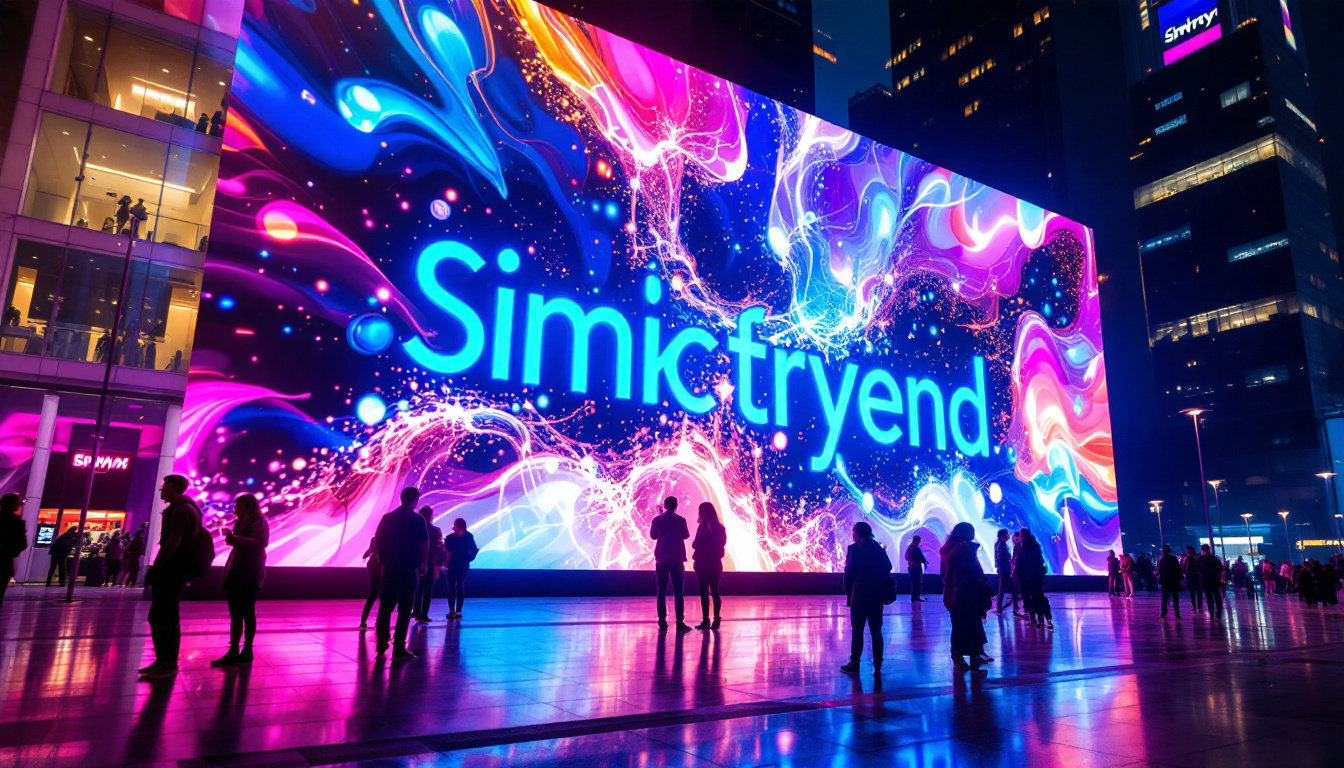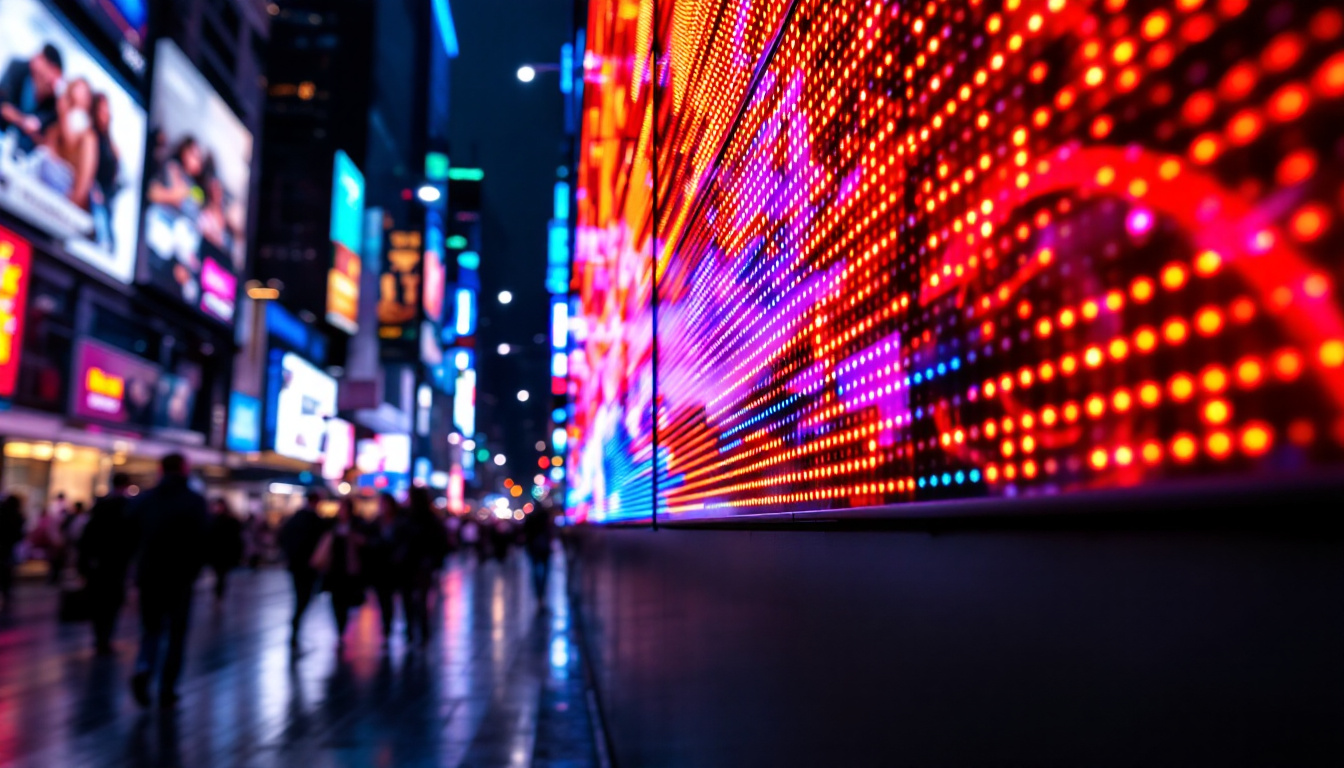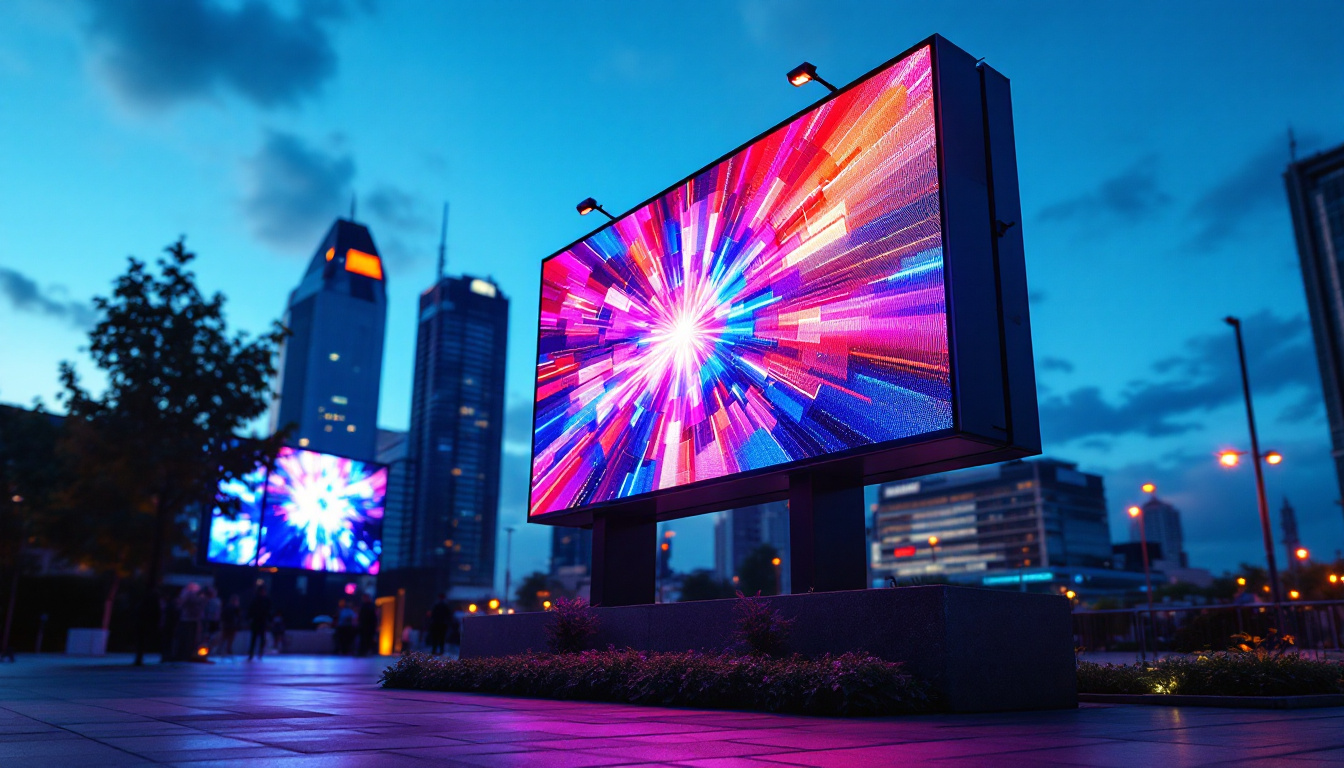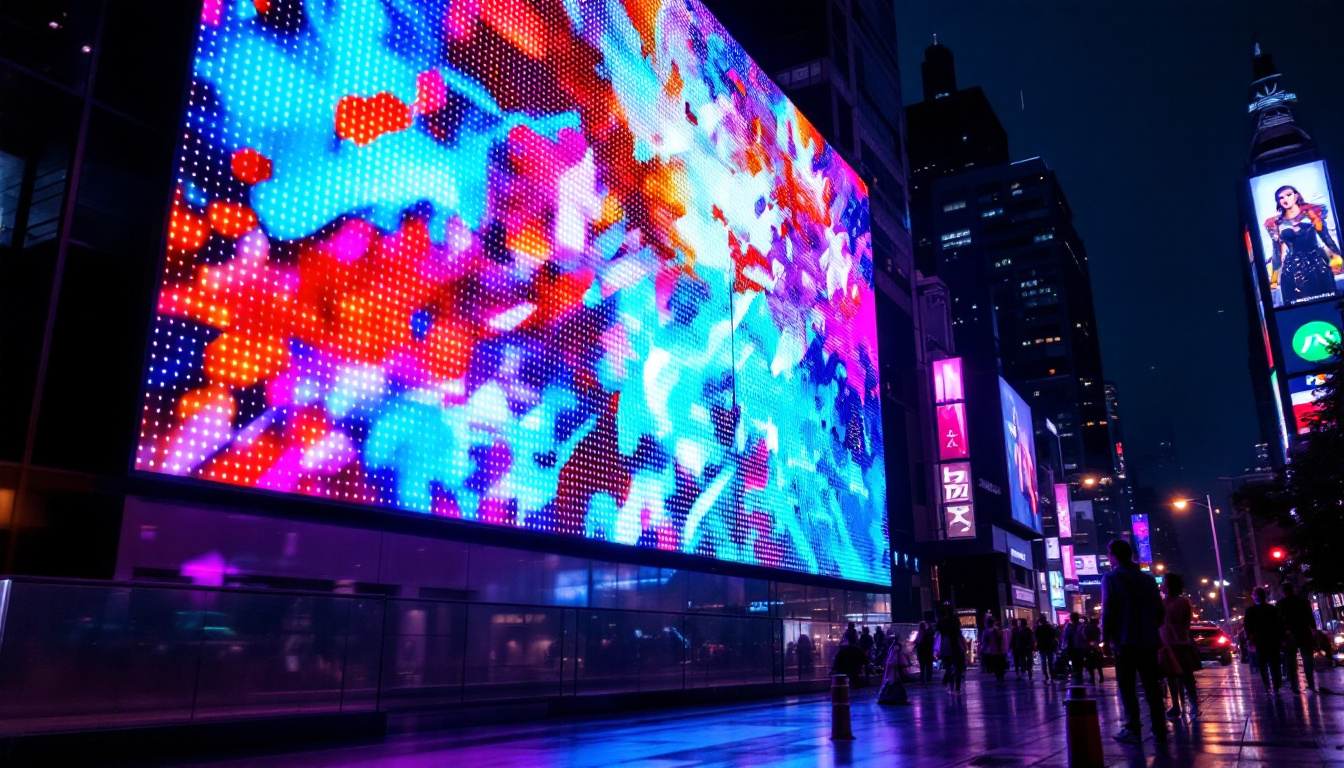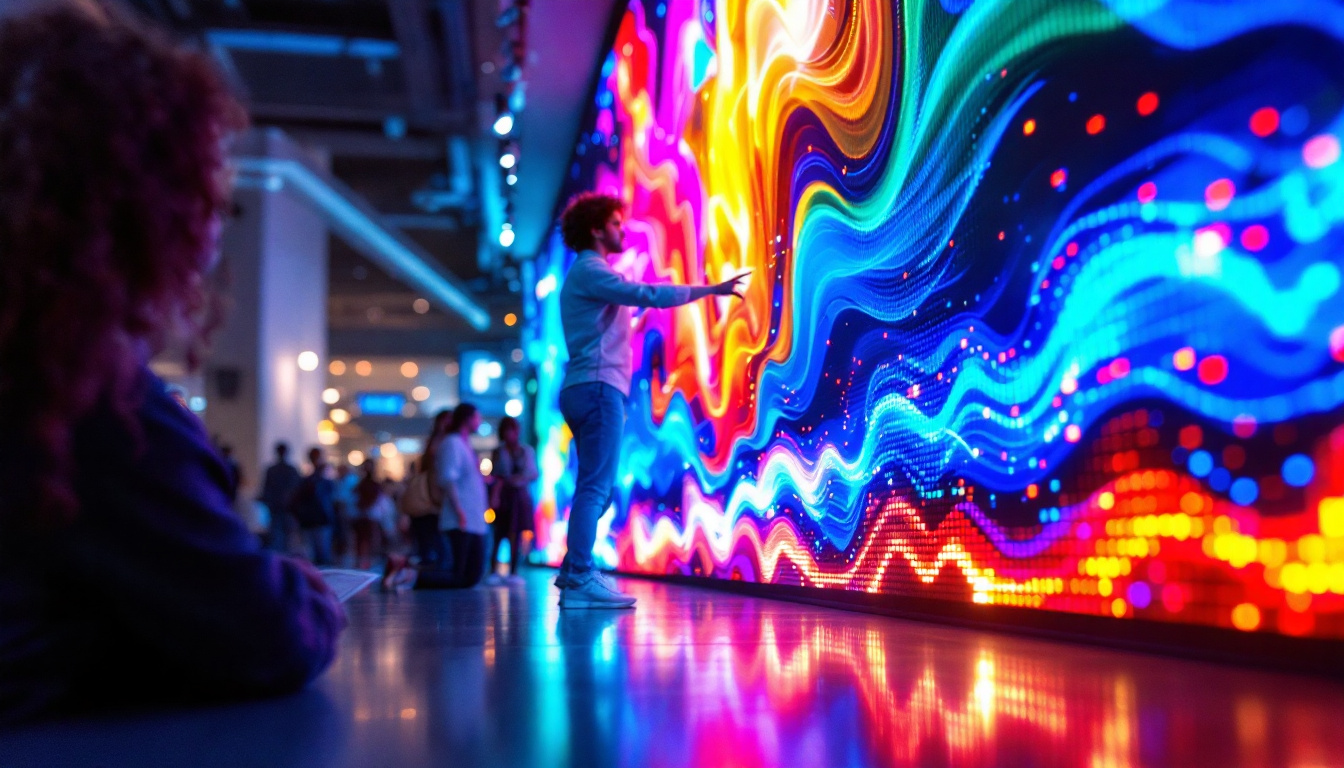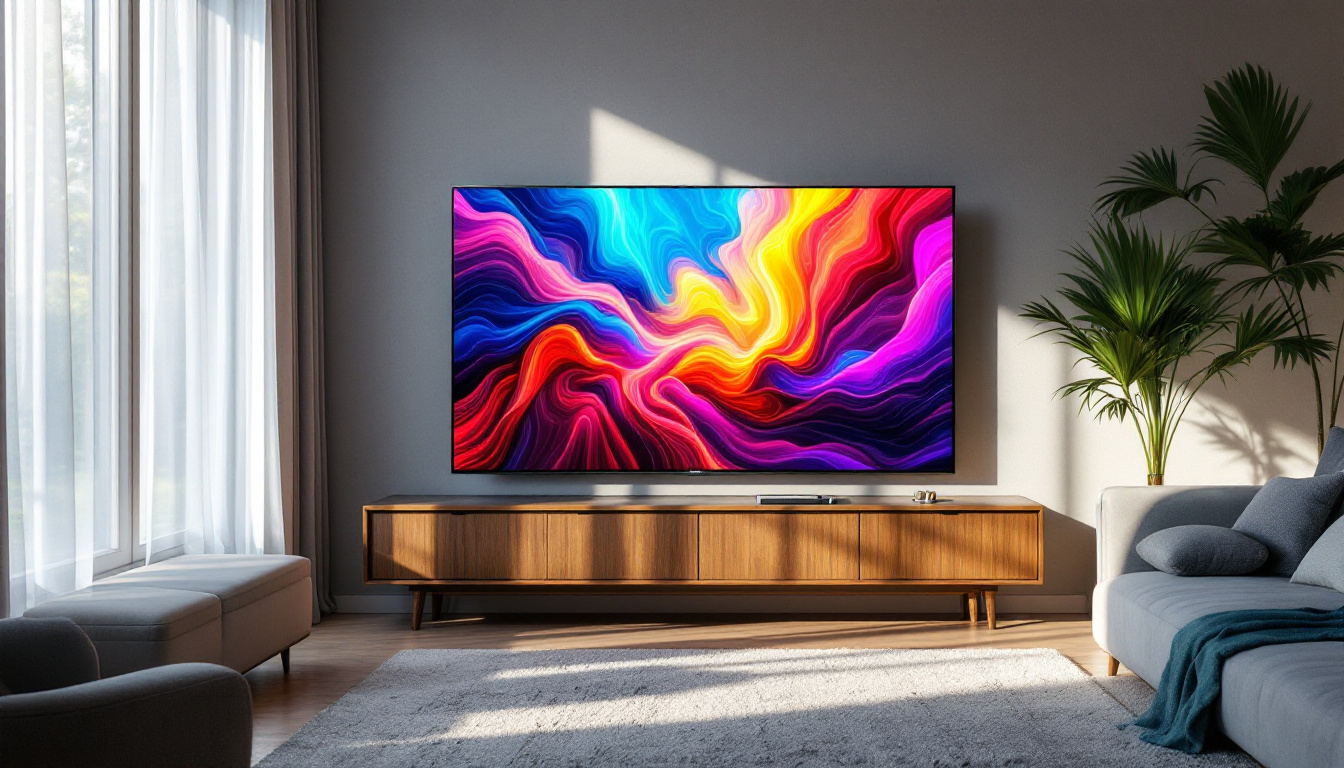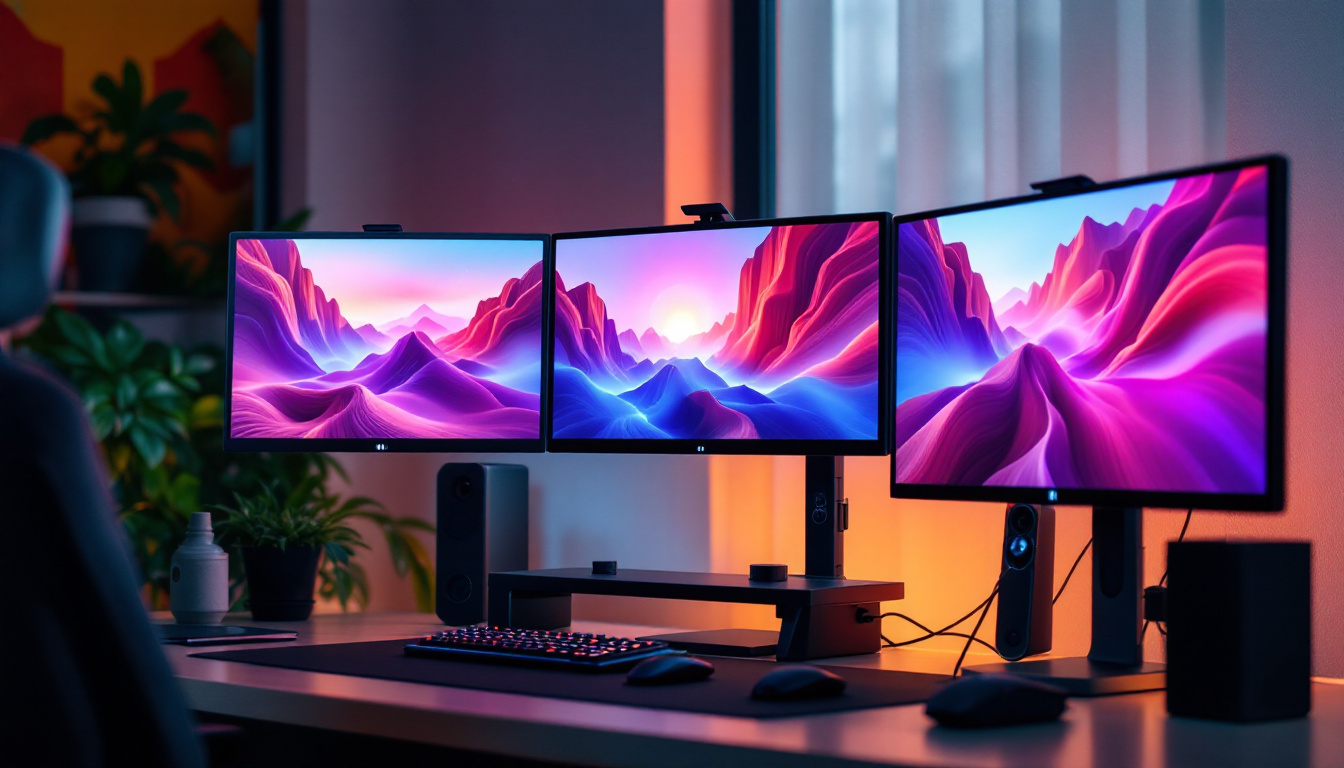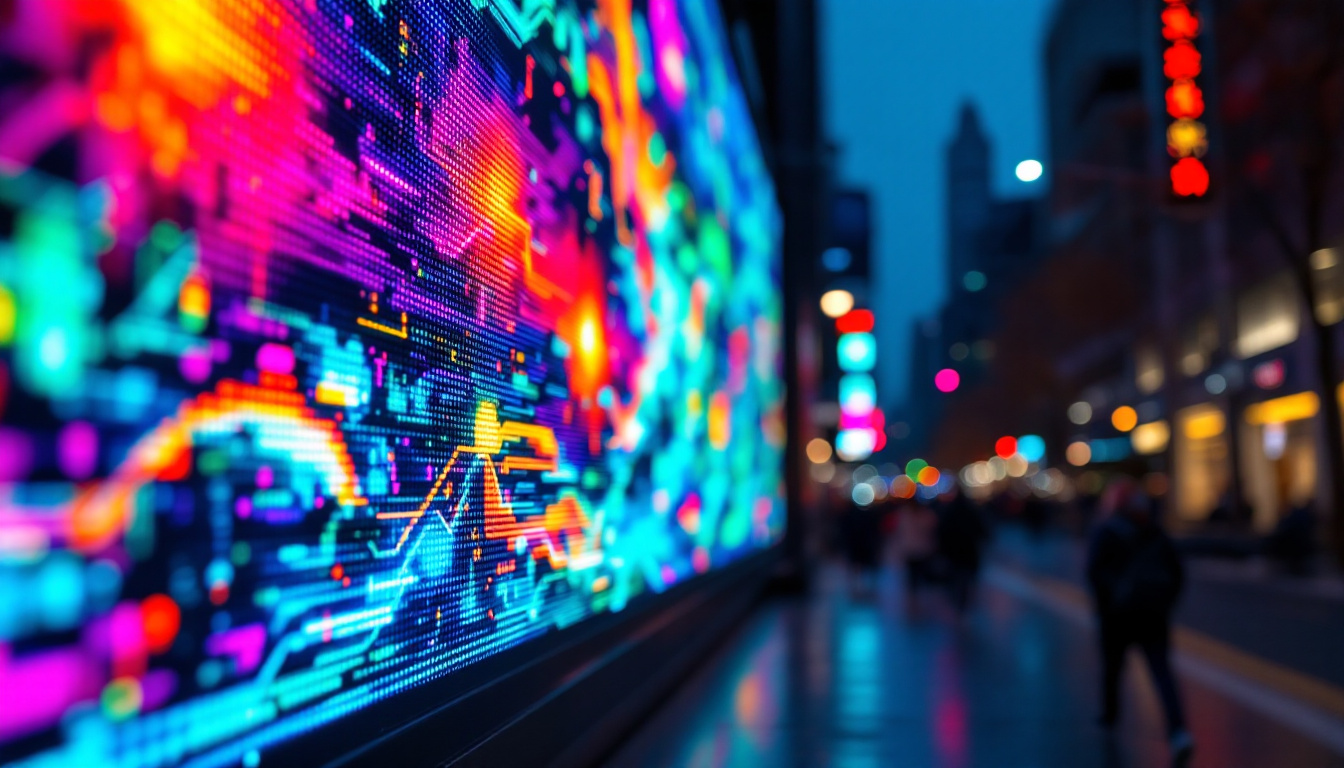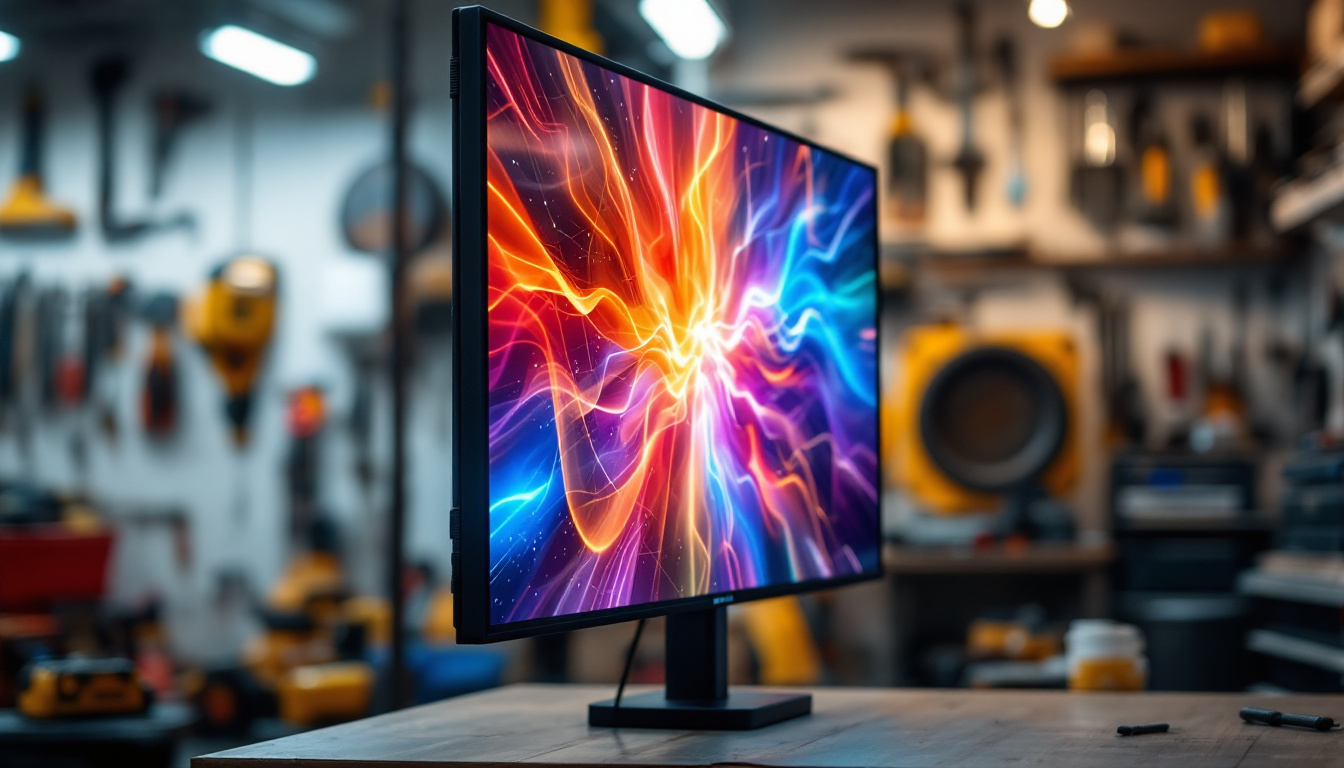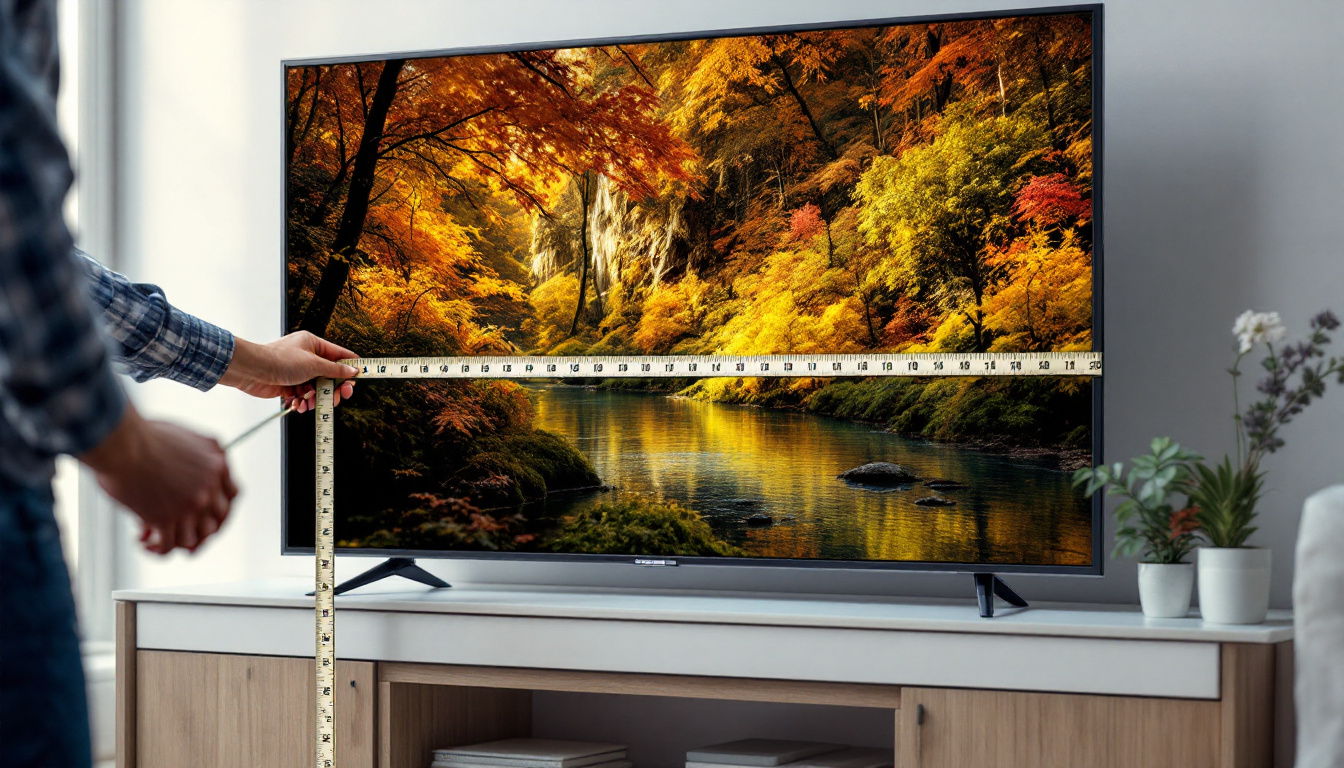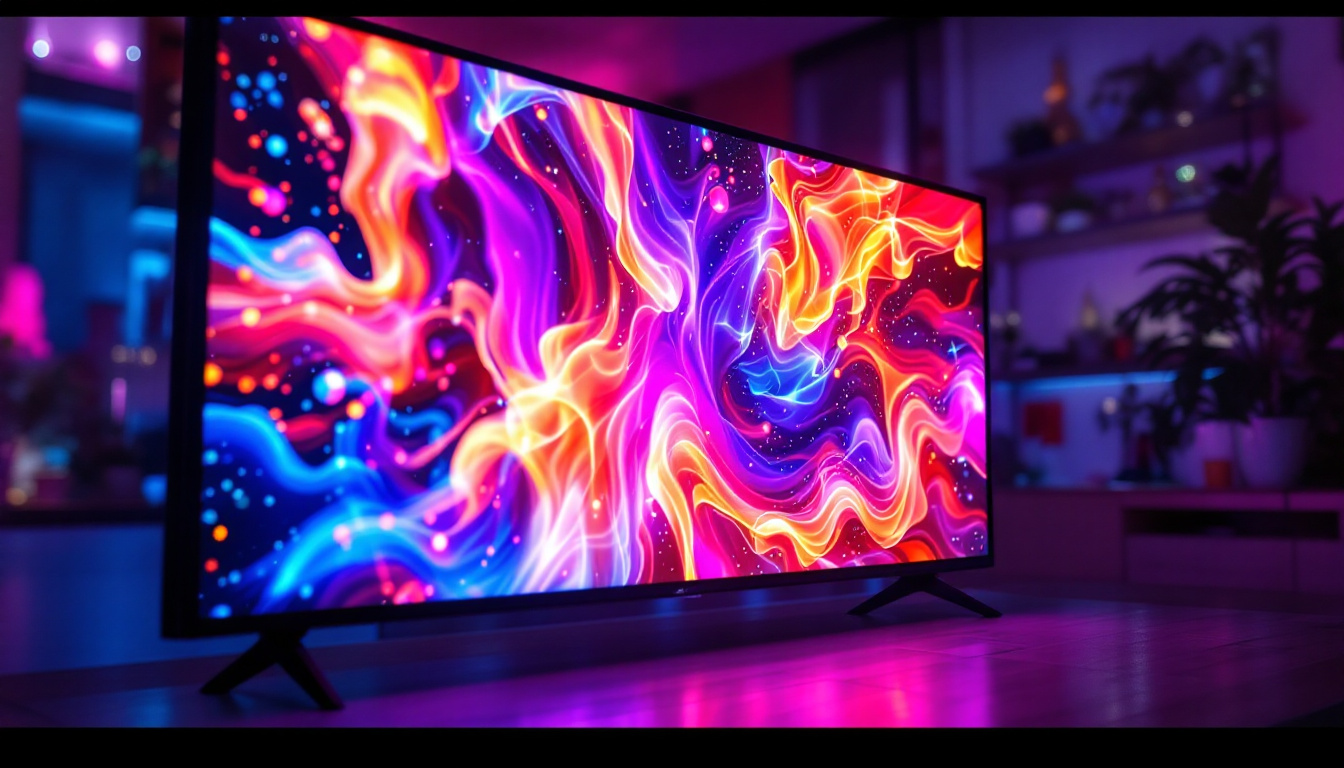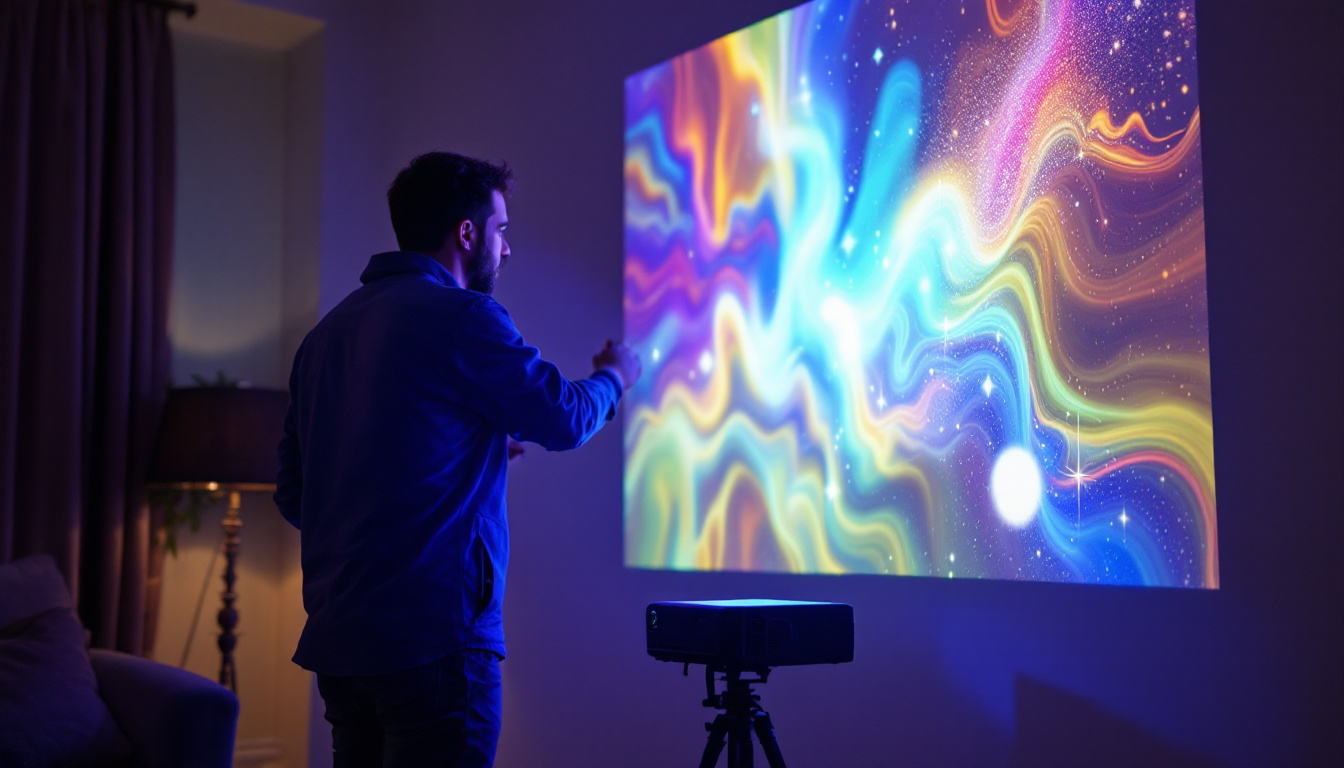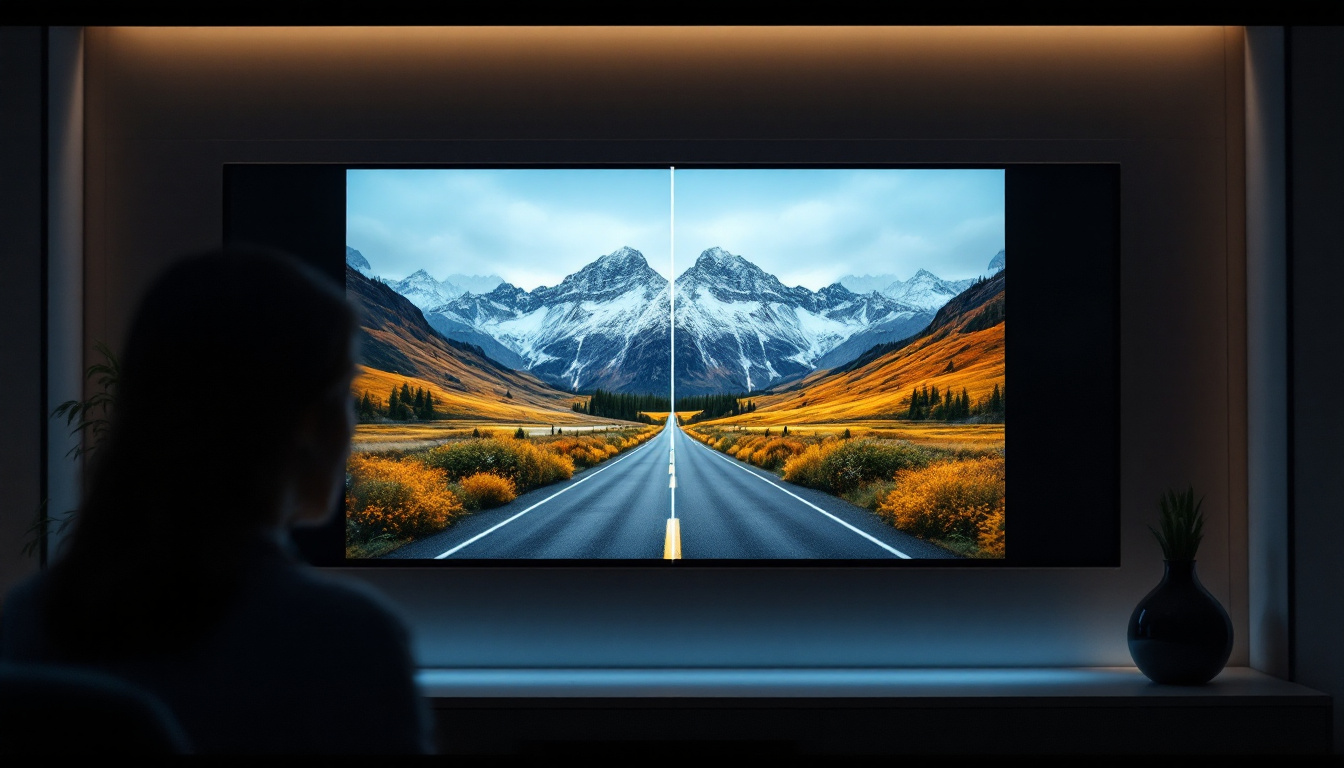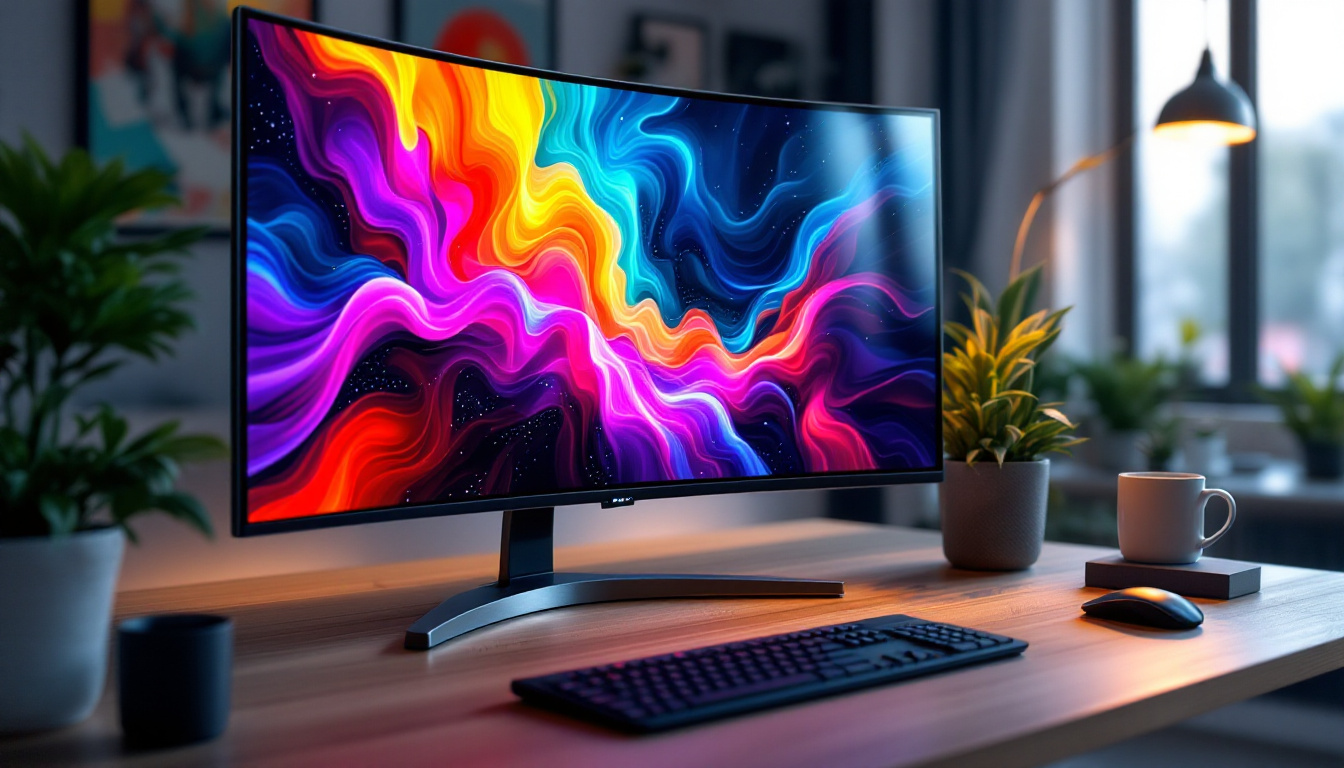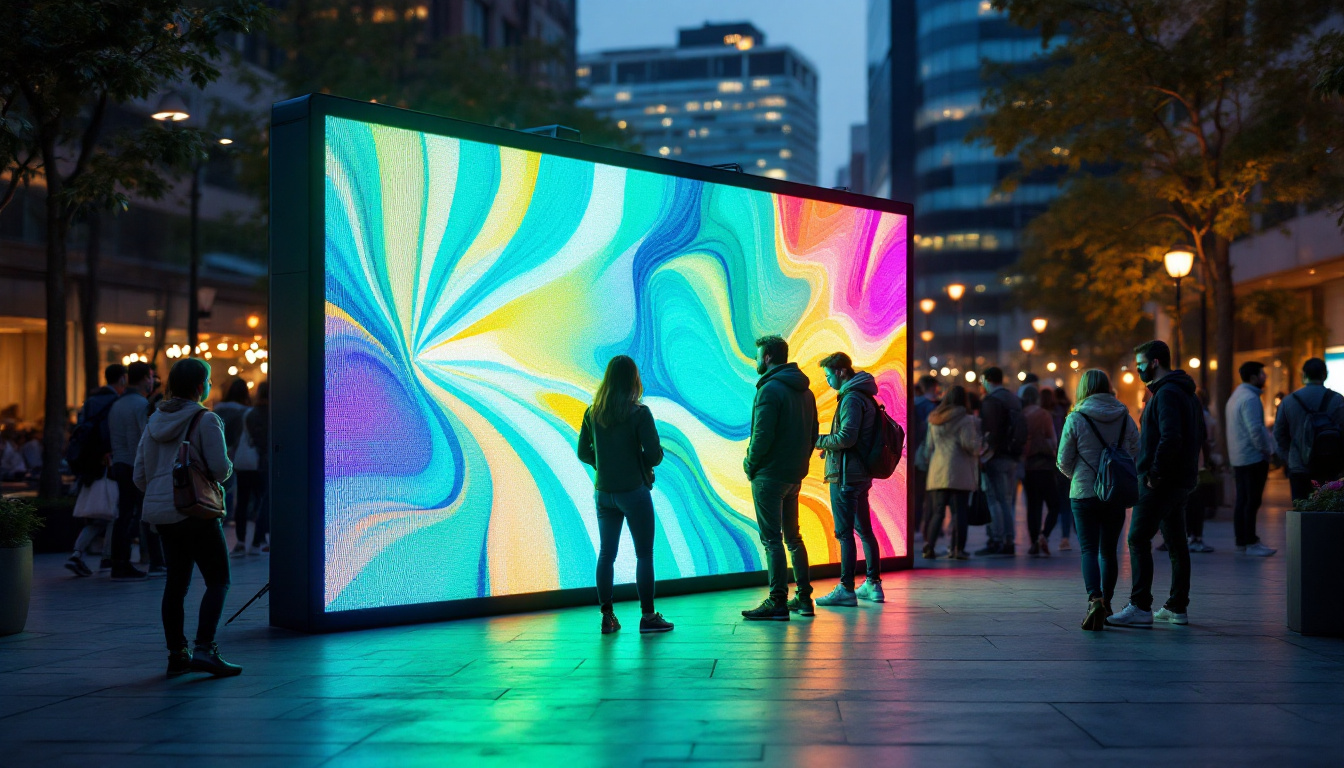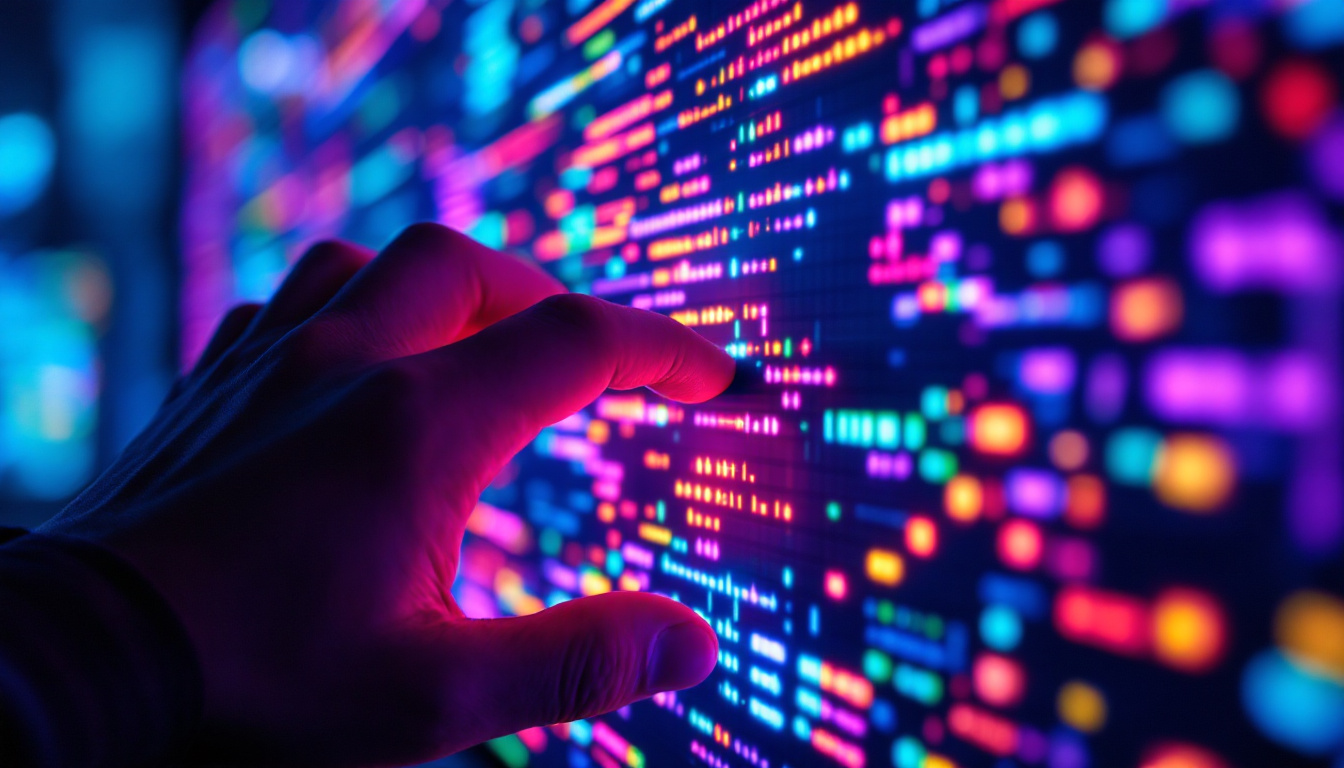In the modern world, LED displays have become ubiquitous, transforming the way information is conveyed in various settings. From advertising billboards to indoor screens in corporate environments, LED technology has revolutionized visual communication. This article delves into the intricacies of LED displays, exploring their technology, applications, and advantages.
Understanding LED Technology
LED, or Light Emitting Diode, is a semiconductor device that emits light when an electric current passes through it. This technology has evolved significantly since its inception, leading to the development of vibrant and energy-efficient displays. Understanding the basic principles of LED technology is essential for grasping how LED screens function.
The Basics of LED Functionality
At its core, an LED display consists of numerous individual LEDs arranged in a grid. Each LED can emit different colors based on the electrical signals it receives. By combining red, green, and blue (RGB) LEDs, a full spectrum of colors can be produced, allowing for dynamic and colorful visuals. The brightness and clarity of these displays make them ideal for various applications.
LEDs are known for their longevity and energy efficiency. Unlike traditional incandescent bulbs, which waste a significant amount of energy as heat, LEDs convert a higher percentage of energy into visible light. This efficiency not only reduces energy costs but also contributes to a lower environmental impact. Furthermore, the durability of LEDs means they can withstand harsher conditions, making them suitable for outdoor use where exposure to the elements is a concern.
Types of LED Displays
LED displays can be categorized into several types based on their application and design. The most common types include:
- Direct View LED Displays: These displays consist of individual LEDs that are visible from a distance. They are often used for large outdoor billboards and signage.
- LED Video Walls: Composed of multiple smaller LED panels, these walls create a larger display area. They are commonly used in concerts, events, and large venues.
- OLED Displays: Organic LEDs are a newer technology that provides even better color accuracy and contrast. They are often used in high-end televisions and mobile devices.
In addition to these common types, there are also specialized LED displays designed for niche applications. For instance, transparent LED displays are gaining popularity in retail environments, allowing for eye-catching advertising while maintaining visibility through the glass. Similarly, flexible LED displays are being developed for innovative applications, such as curved screens that can conform to various shapes and surfaces, enhancing the versatility of display technology. These advancements not only expand the creative possibilities for designers and advertisers but also pave the way for new interactive experiences that engage audiences in unique ways.
Moreover, the integration of smart technology with LED displays is transforming how we interact with visual media. Many modern LED displays come equipped with sensors and connectivity options, enabling real-time data integration and interactivity. This allows for dynamic content that can change based on audience engagement or environmental factors, such as time of day or weather conditions. As technology continues to advance, the potential applications for LED displays seem limitless, pushing the boundaries of how we communicate and share information visually.
Applications of LED Displays
LED displays have found their way into numerous sectors, proving their versatility and effectiveness in various applications. From entertainment to information dissemination, the uses of LED technology are vast.
Advertising and Marketing
One of the most prominent applications of LED displays is in advertising. Digital billboards and signage can capture attention with vibrant colors and dynamic content. The ability to change advertisements in real-time allows businesses to tailor their marketing strategies based on time, location, or audience demographics.
Moreover, LED displays can be found in retail environments, where they are used to showcase products, promotions, and brand messaging. Their high visibility and engaging content help drive foot traffic and enhance the shopping experience. Retailers can utilize LED screens to create interactive experiences, such as virtual try-ons or product demonstrations, which can significantly increase customer engagement and conversion rates.
Events and Entertainment
In the realm of entertainment, LED displays play a crucial role in enhancing the audience experience. Concerts, festivals, and sporting events utilize large LED screens to display live feeds, graphics, and animations. This not only allows attendees to see performances from a distance but also creates an immersive atmosphere. The integration of synchronized lighting and LED visuals can elevate the overall production value, making events more memorable for the audience.
Additionally, LED technology is widely used in theaters and cinemas for both stage productions and film screenings. The ability to create stunning visuals and effects adds depth to storytelling and captivates audiences. In live theater, for instance, LED backdrops can transform a simple stage into various settings, allowing for seamless transitions between scenes and enhancing the narrative flow.
Corporate and Educational Settings
In corporate environments, LED displays are used for presentations, meetings, and information sharing. Digital signage in offices can convey important messages, schedules, and updates in real-time, improving communication and efficiency. These displays can also serve as collaborative tools, enabling teams to share content and ideas dynamically during brainstorming sessions or strategy meetings.
Educational institutions also benefit from LED technology. Interactive displays in classrooms facilitate engaging learning experiences, allowing educators to present information dynamically. Furthermore, LED screens in auditoriums can enhance presentations and lectures, making them more impactful. Beyond traditional education, LED displays can be used in online learning environments, providing an interactive platform for remote students to engage with visual content and participate in discussions, thus bridging the gap between in-person and digital learning experiences.
Advantages of LED Displays
The growing popularity of LED displays can be attributed to their numerous advantages. Understanding these benefits helps explain why they have become a preferred choice for many applications.
Energy Efficiency
One of the most significant advantages of LED displays is their energy efficiency. Compared to traditional display technologies, LEDs consume considerably less power, leading to lower electricity bills and a reduced carbon footprint. This efficiency is particularly beneficial for large-scale installations that operate continuously.
Durability and Longevity
LED displays are known for their durability. They are built to withstand various environmental conditions, making them suitable for both indoor and outdoor use. Additionally, LEDs have a long lifespan, often lasting tens of thousands of hours before needing replacement. This longevity reduces maintenance costs and the frequency of replacements.
High-Quality Visuals
LED technology offers superior image quality, with bright colors and high contrast ratios. This clarity ensures that content is easily visible, even in bright sunlight or well-lit environments. The ability to produce a wide range of colors enhances the overall viewing experience, making LED displays ideal for applications where visual impact is crucial.
Challenges and Considerations
While LED displays offer numerous benefits, there are also challenges and considerations that must be addressed. Understanding these factors is essential for making informed decisions regarding their use.
Initial Costs
The initial investment for LED displays can be higher than traditional display technologies. This upfront cost may deter some businesses or organizations from adopting LED technology. However, it is essential to consider the long-term savings in energy and maintenance costs, which can offset the initial expenditure over time.
Heat Management
LED displays generate heat during operation, which can impact their performance and longevity if not managed properly. Adequate ventilation and cooling systems must be implemented, particularly for large installations. Failure to address heat management can lead to reduced efficiency and a shorter lifespan for the display.
Content Management
Creating and managing content for LED displays requires specialized knowledge and tools. Organizations must invest in software and training to ensure that their displays are used effectively. Additionally, the dynamic nature of LED content necessitates regular updates and maintenance to keep the information relevant and engaging.
The Future of LED Displays
The future of LED displays looks promising, with ongoing advancements in technology and applications. As the demand for high-quality visual communication continues to grow, innovations in LED technology are expected to enhance performance, efficiency, and versatility.
Emerging Technologies
One of the most exciting developments in LED technology is the rise of MicroLED and MiniLED displays. These technologies offer even higher resolution and improved color accuracy, making them suitable for a wider range of applications, including consumer electronics like televisions and smartphones.
Additionally, advancements in flexible LED displays are paving the way for new design possibilities. These displays can be bent and shaped to fit various environments, allowing for creativity in installation and usage.
Integration with Smart Technology
As smart technology continues to evolve, LED displays are increasingly being integrated with IoT (Internet of Things) systems. This integration allows for real-time data sharing, remote management, and enhanced interactivity. For example, digital signage can be updated instantly based on audience engagement metrics or environmental conditions.
Conclusion
LED displays have transformed the landscape of visual communication, offering unparalleled advantages in energy efficiency, durability, and image quality. Their diverse applications across various sectors highlight their versatility and effectiveness in conveying information and engaging audiences.
While challenges such as initial costs and content management exist, the long-term benefits of LED technology often outweigh these concerns. As advancements continue to shape the future of LED displays, their role in communication and advertising will only grow, making them a vital component of modern society.
In summary, understanding LED displays, their technology, applications, and advantages is essential for anyone looking to leverage this powerful tool for communication and engagement. Whether in advertising, entertainment, or corporate settings, LED displays are here to stay, illuminating the path to the future of visual storytelling.
Illuminate Your Space with LumenMatrix
Ready to elevate your visual storytelling and captivate your audience with stunning clarity? Discover the innovative world of LumenMatrix LED display solutions. Whether you’re looking to enhance brand visibility with an Indoor LED Wall Display, make a bold statement with an Outdoor LED Wall Display, or create a unique experience with Custom LED Displays, LumenMatrix has the technology to bring your vision to life. Don’t just communicate—mesmerize with LED displays that redefine the standard for visual engagement. Check out LumenMatrix LED Display Solutions and transform your space today.


